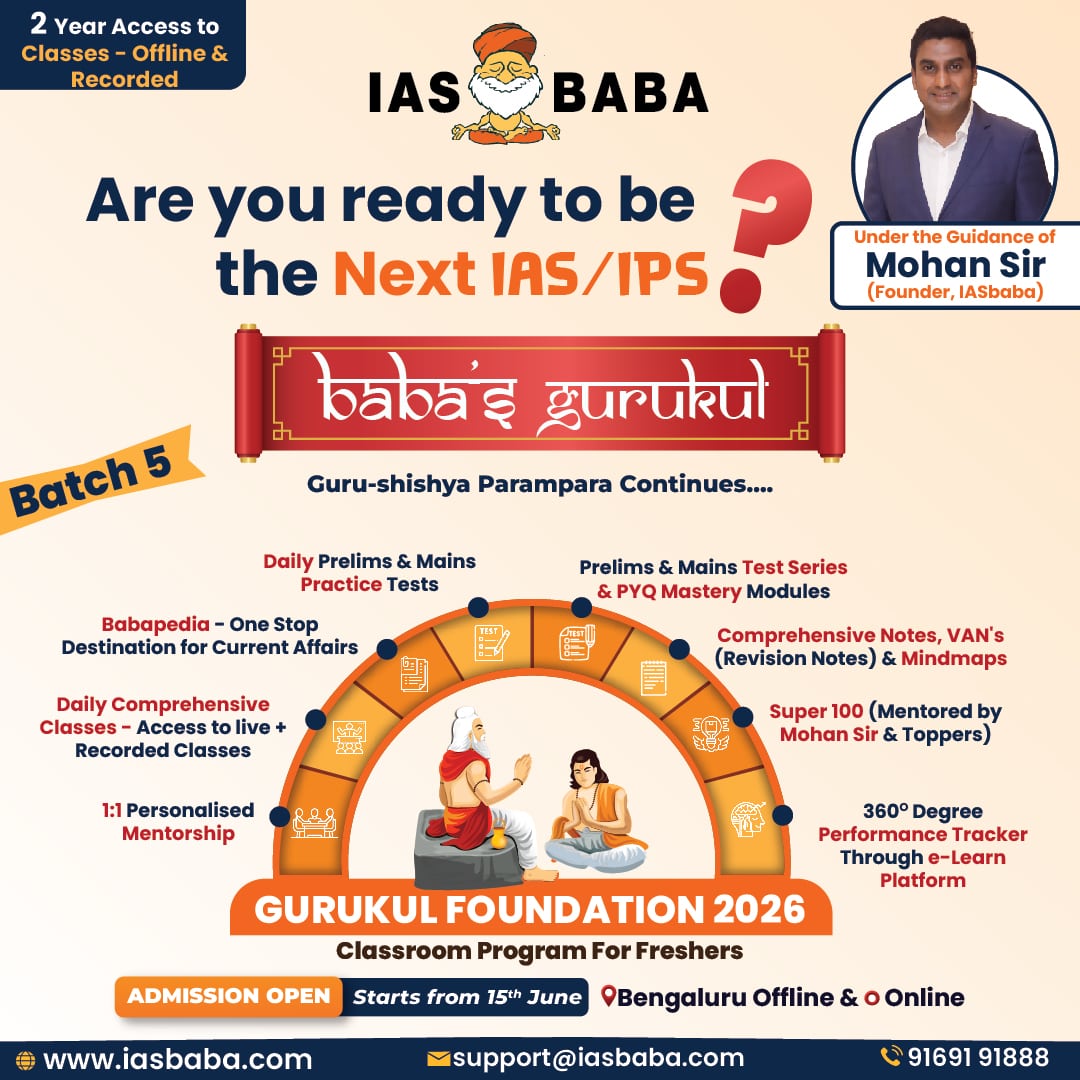IASbaba's Daily Current Affairs Analysis, IASbaba's Daily Current Affairs January 2016, National, Science and Technology, UPSC
Archives
IASbaba’s Daily Current Affairs – 12th February, 2016
SCIENCE & TECHNOLOGY
TOPIC:General studies 3:
- Awareness in the field of IT, Space, Computers, Robotics and Nanotechnology.
Landmark announcement on gravitational waves may shed light on early universe
Background:
- Recently Scientists spot elusive space-time ripples. These space-time ripples are termed as Gravitational waves.
- A century ago, Albert Einstein hypothesised the existence of gravitational waves, small ripples in space-time that dash across the universe at the speed of light.
- Earlier scientists were able to find only indirect evidence of their existence but now direct observations of the gravitational waves is made possible with the help of gigantic optical instrument called LIGO [Laser Interferometer Gravitational-wave Observatory].
- LIGO detected signals of gravitational waves emanating from two merging black holes 1.3 billion light years away arriving at their instruments on the Earth.
What are Gravitational waves?
- Gravitational waves are literally ripples in the curvature of space-time that are caused by collisions of heavy and compact objects like black holes and neutron stars.
- You get radiation, basically light, when you move some sort of charged particle. When you’re moving masses, you get gravitational waves.
Why such discovery has created ripples amongst scientists fraternity?
- All the current knowledge about the universe comes from electromagnetic waves like radio waves, visible light, infrared light, X-rays and gamma rays.
- These electromagnetic waves get scattered as they traverse the cosmos, thus lot of information remains hidden.
- As these gravitational waves don’t get scattered as they traverse the cosmos, making them potential source of information regarding what the universe was like in its infancy.
- This landmark discovery provides new way to observe the cosmos and unlock secrets about the early universe and mysterious objects like black holes and neutron stars.
Was there any prediction earlier regarding Gravitational waves?
- Albert Einstein proposed the existence of these waves in 1916 as an outgrowth of his ground-breaking general theory of relativity.
- While Sir Isaac Newton visualised gravitational force as a pulling force between objects, Albert Einstein opined it to be a pushing force due to the curvature of four dimensional space time fabric.
How are these waves detected?
Scientists have been trying to detect them using two large laser instruments in the United States, known together as the Laser Interferometer Gravitational-Wave Observatory (LIGO), as well as another in Italy.
Way ahead:
Discovery of Gravitational waves would be a first step towards the beginning of what promises to be a turning point in astronomy that will enable us to study hitherto inaccessible phenomena, and in future “see” the universe in the remote past — all the way to the moment of its birth.
Connecting the dots:
- What are Gravitational waves? How is it different from electromagnetic waves? How are these waves detected?
- Gravitational wave is a potential source of information regarding what the universe was like in its infancy? Comment.
NATIONAL
TOPIC:
General studies 2:
- Government policies and interventions for development in various sectors and issues arising out of their design and implementation; Important aspects of governance, transparency and accountability, e-governance-applications, models, successes, limitations and potential
General studies 3:
- Science and Technology- Developments and their applications and effects in everyday life, Achievements of Indians in Science & Technology; indigenization of technology and developing new technology
India’s digital transformation
The World Bank’s recently released World Development Report (WDR) ‘Digital Dividends’ provides some answers to the glaring questions regarding India’s digital divide and the unused dividends.
‘…digital technologies have boosted growth, expanded opportunities, and improved service delivery; yet their aggregate impact has fallen short and is unevenly distributed’
Need to work on its “analogue complements”—Should strengthen regulations that ensure competition among businesses, by adapting workers’ skills to the demands of the new economy, and by ensuring that government institutions and others are accountable.
Contrast with China
- 227 million Internet users, compared to 665 million in China
- Fewer than two out of every five Indian businesses had an online presence compared to almost two-thirds of firms in China.
- Cost of a 1 Mbit/s residential broadband service in India- 6-10 times higher than in China
- Digital divide: Across age, gender, geography and income within India is significantly higher than in China
- Aadhaar— India scores higher than China in digital adoption by governments
The idea of human ‘capability’
India, is unfortunately riddled with a high digital access gap but also has a bigger digital capability gap
Capability gap—According to the WDR, arises from two main sources:
- the overall business climate and
- the quality of human capital
Doing business indicators: India scores considerably below China and therefore, is important for India to create space for creativity and enterprise and to promote competition.
Quality of basic infrastructure—
- Slow pace of growth of – Expressways, logistics, storage, postal delivery system and reliable supply of electricity —hampered the growth of e-commerce in India
- The excessively cautious approach of Indian regulators towards disruptive technological innovations such as mobile money or ride-sharing services has made it difficult for digital start-ups to enter new markets and achieve scale.
Significant lag: The skills level of the average Indian worker remains significantly behind his or her Chinese counterpart even though considerable strides have been made in improving its human capital
- Around 25 per cent of India’s adult population cannot read and write compared to fewer than 5 per cent in China.
Difference in quality of education:
Annual Status of Education Report (ASER) test scores in rural India:
- 10 per cent of children aged 16 and below cannot identify single-digit numbers consistently.
- Fewer than one in five can do a subtraction, performing considerably below their grade level.
Challenges of DI Programme
- Implementation: The entire programme is designed as a top level model on the technological front. Besides the nine pillars of the program is directly related with the high end consumers but not with the rural customers
- Deploying W-Fi Centres & Hotspot: BSNL’s (Bharat Sanchar Nigam Ltd) mass deployment of Wi-Fi hotspots across the country is not widespread.
- Improving IT Literacy: Improving IT literacy is very important because the entire mass which is using internet should know how to secure his/her online data.
- Data Vulnerability: Each and every citizen of India would have all the personal details online including bank details, Income tax details, PAN details which might be vulnerable if not secured properly. In case this is breached, then any individual would lose the privacy of the data and would be compromised.
- Excessive server Hits: If majority of the population start using online, then definitely the Government portal sever will start getting more number of hits day by day.
- Man-In-The-Middle Attack: It is a type of cyber- attack where a malicious actor intrudes him/ herself into a conversation between two parties and gains access to information that the two parties were trying to send to each other.
- Security: It is necessary to overcome all the challenges mentioned above with the help of a proper IT security solution like eScan.
IASbaba’s Views:
- There is a need to develop—
- Digital Bharat programme- We usually relate Bharat with our rural folk and since the majority of the population live in rural areas often called Bharat, we actually need a Digital Bharat programme to ensure that Bharat is as connected and digital as India, which lives in its metros and cities.
- Digital India Year- As to realize Digital India, we need a Digital India decade, or even to create and keep the momentum sustainable and action oriented, we need at least a Digital India Year
- There exists a direct correlation between broadband connectivity and GDP growth where broadband would result in bringing best in class of healthcare, education and banking reaching rural masses which would help in elevating poverty and improving standard of livings in the rural India. Therefore, it is imperative that focused, persistent attention be given to each of its pillars so that the big programme does not end up in as a failure.
- To build infrastructure is a small part of its sustained functionality for which the approach has to be well-planned, executed and monitored and following steps can be taken for the same-
- The national optical fibre network should be divided into a number of state-level projects in order to secure the buy-in of state governments, crucial for obtaining right-of-way permissions.
- Vertical integration of the private infrastructure operator and the service provider should be permitted in order to strengthen the business case and trigger operational efficiencies
- A phase-wise roll-out should be planned: the universal service need not be a uniform service
- WDR– Even the most sophisticated technologies are no substitute for tackling long-standing shortcomings in other areas — most importantly basic health, education and a regulatory ethos that encourages competition and enterprise. The Aadhaar digital ID system has become a model for many other countries, helping governments to become more efficient and more inclusive in expanding services to those who had been left behind. This should be enhanced more to bring in more widely shared digital dividends — faster growth, more jobs, and better services — depending not only on expanding affordable access to all, but also on making long overdue progress on the analogue complements of digital investments.
Connecting the Dots:
- Write a note on digitally underpowered majority online.
- Critically discuss the challenges of DI
MUST READ
Why 7.6% growth is hard to square
TERI’s disgraceful appointment
Education reform needed in Kerala
Related Articles:
http://iasbaba.com/2015/08/iasbabas-daily-current-affairs-13th-august-2015/
http://iasbaba.com/2015/09/iasbabas-daily-current-affairs-12th-september-2015/
http://iasbaba.com/2015/08/iasbabas-daily-current-affairs-4th-august-2015/
http://iasbaba.com/2015/10/iasbabas-daily-current-affairs-16th-october-2015/
India, UAE sign 7 agreements to step up bilateral cooperation-During Modi’s visit to UAE, it was decided to increase the current volume of bilateral trade by 60% in the next five years
Related Articles:
India’s ties with West Asia : An analysis (Part I)
The sprouting of the “ look west” policy (Part III)
NITI Aayog’s purpose is still unclear- It is unfortunate that the political leadership has not adequately empowered it
Related Articles:
All India Radio Analysis -IASbaba
A story of reckless lending- The problem of NPAs points to banks’ vulnerability to political pressure
Related Articles:
Non-performing assets and recent steps to clean them up
Capital infusion in public sector banks
Performance of Public Sector Banks in India : An analysis
Enabling direct transfers through JAM- Each element—Jan Dhan Yojana, Aadhaar and mobile—needs some significant fixes to work effectively
Related Articles:








